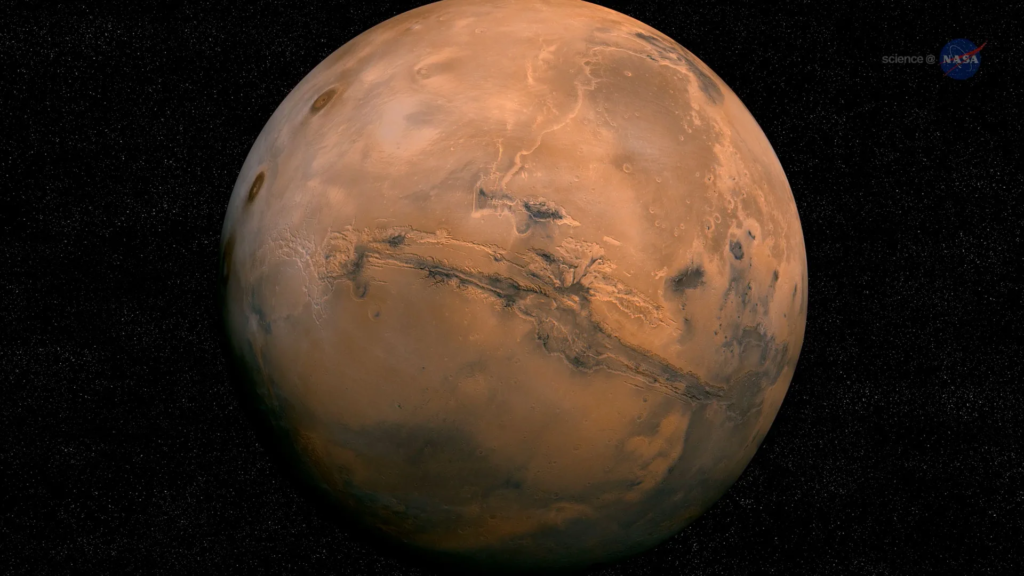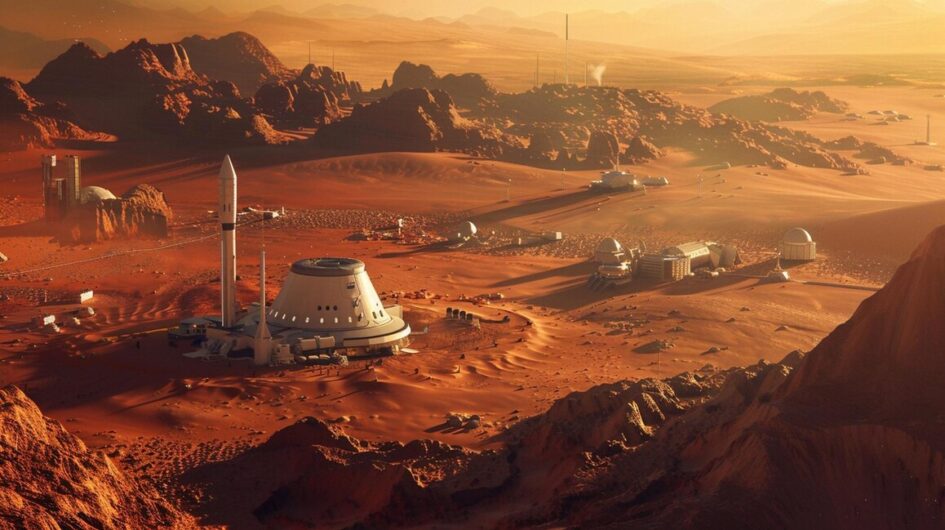The topic of colonizing another planet, particularly devising a permanent human settlement, is currently seen only in sci-fi movies. While it may sound like a fictitious derision or a fruitless concept, it’s not as it seems. Is this an actual prospect?
Well, yes, it’s true. While it may not seem like we possess the technology immediately, it is truly an achievable goal. With the development and successful testing of SpaceX’s StarShip and new ideas like refuelling at strategic points like LEO (Low Earth Orbit), we are on the path to developing a system to send humans to other planets!

Mars – and its problems
Table of Contents
One specific planet identified as a prospective hub of life is Mars. Acclaimed for its potential water sources and for being a close planet, Mars seems like the one planet that can be colonized by humans. The problems? Mars has an unbearably thin atmosphere and receives only 60% of the sunlight Earth receives, the result of which temperatures range from -153 degrees Celsius to 20 degrees Celsius, and through the thin atmosphere most of its water is lost.
Also, the absence of a magnetic field allows solar winds and cosmic radiation to pass through and reach the surface. The thin atmosphere makes Mars incapable of having an atmosphere consisting of enough oxygen for humans to breathe, and the temperature is inhospitable for humans.
Furthermore, Mar’s atmosphere pressure is 1% of Earth’s. This is well below the Armstrong limit, the defined limit of atmospheric pressure to support life. Should the pressure go below this limit, water will start to boil at body temperatures, removing water from the body and making the person lose consciousness, and it can be fatal should the pressure not be restored in 60-90 seconds.
The Solutions
Despite these daunting obstructions, innovative solutions are emerging. The problem of the atmosphere being too thin is not impossible to solve—terraforming, the process of making a planet habitable for life, may be utilized. Here, the aim is to make the atmosphere thicker and to host gases like oxygen to support life.
The main suggestion is to use chlorofluorocarbons (CFCs), perfluorocarbons (PFCs), and sulfur hexafluoride to contribute to warming Mars and eventually thickening its atmosphere. These gases are powerful contributors to Global warming; hence, their production was banned on Earth in 1992.
Global warming, normally regarded as the bane of our times, can be advantageous too. Mars, with its frigid minimum temperatures of -153 degrees Celsius, stands to gain tremendously from increased warmth. CFCs and PFCs have a thousand times more impact than Carbon Dioxide as a greenhouse gas. By introducing these gases to the Martian atmosphere, the planet will undergo the effects of Global Warming, heating Mars, which will thaw ice caps and release Carbon Dioxide and Water Vapour, which will thicken the atmosphere.
The Beginning of a Colony
On Mars, an artificial living environment is not hard to set up. Plants can be grown in greenhouses. Photosynthesis needs water, carbon dioxide and light. Carbon Dioxide makes up 95% of the Martian atmosphere, and plants can receive warmth through pressurized greenhouses, which can also be artificially warmed. The low atmospheric pressure on Mars often removes all water, but pressurized gases from the atmosphere can be used. By setting up a solar farm carried through many missions, electricity can be generated to artificially heat greenhouses and power grow lights, which emit light on the same spectrum as the sun. Mars ice caps can be distilled into pure water, which, with added minerals, could be used to grow plants through hydroponics.
Another problem of Mars is the absence of a magnetic field. This allows solar winds and cosmic radiation to reach the surface and the atmosphere to become thinner as more and more is released into space. To resolve this, research has uncovered new methods to create an artificial magnetic field. A method has been suggested, to place a magnetic dipolar field with a similar strength comparable to Earth’s magnetic field (achievable with modern technology, with 1-2 Teslas required) at the L1 point, a point between Mars and the Sun, to block solar-emitted particles and potentially allow it’s atmosphere to partially restore and develop itself over time.
The problem of the lack of fuel to transport humans to Mars is easily solved. Rockets launched from Earth can be refuelled at strategic points like LEO (Low Earth Orbit) or GEO (Geosynchronous Orbit) and then may have enough fuel to get to Mars. On Mars, solar panels and equipment will convert CO2 and water vapour to liquid oxygen and methane, and within 18 months, enough fuel should be created to return to Earth.
We can go to Mars – by 2030
To reach Mars, there must be a planetary alignment that allows us to achieve a trajectory to Mars, which occurs only every 26 months, and last happened in October 2024. With prospects of visiting Mars promising, Elon Musk, after the successful test of StarShip, has announced that after the next 26-month window in 2026, SpaceX aims to send StarShip to Mars, uncrewed. If this is successful, they’ll send humans to Mars with StarShip, by 2030.
By performing this, the aim of terraforming Mars to make it more habitable is achievable, the problem of the lack of fuel is solvable, and the Martian Dream to colonize Mars is no longer a fictitious derision, but a goal achievable in the foreseeable future, with plans being made to reach there soon. Mars, here we come!
[Image Credits – Freepik and NASA Science]

November 1, 2024 at 9:28 am
Wow viraj! so informative- you write so well and this was easy to follow for a layman like me 🙂